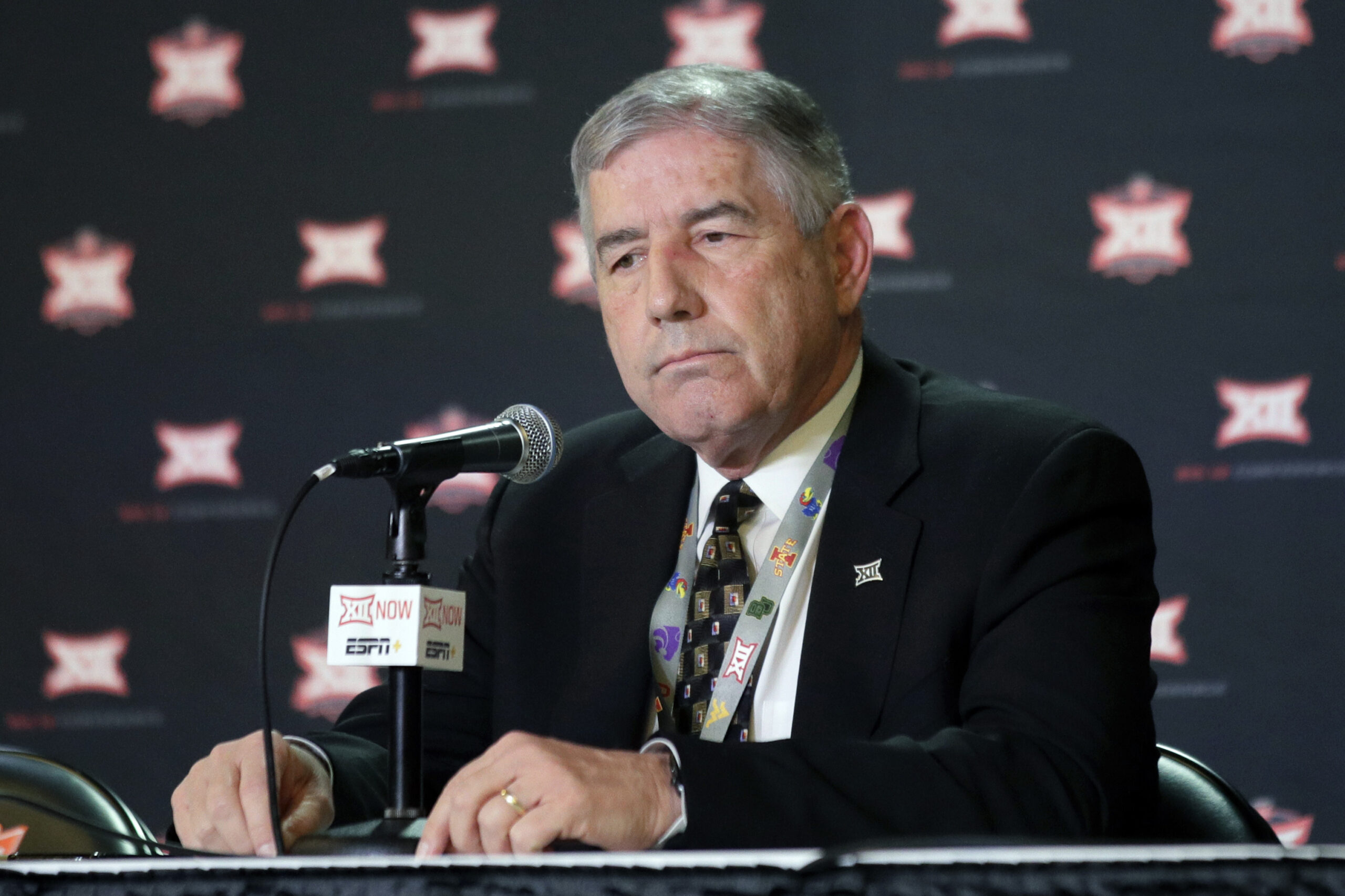MORGANTOWN, W.Va. — Bob Bowlsby spoke in uncertain terms Thursday, and tried to distance himself from doom and gloom that has come with the coronavirus wreaking havoc on college athletics.
It became a difficult task during a 60-minute teleconference with reporters, as Bowlsby began to discuss a possible future that did not include a 2020 college football season, as well as just how much less Big 12 schools should expect in TV revenue payments after the Big 12 and NCAA basketball tournaments were canceled this season.
“The uncertainty of this is unnerving, there’s no question about it,” Bowlsby said.
As for the 2020 college football season, Bowlsby said plans are still in place to have a full season, although the transitioning could be difficult if athletes continued to be locked out from training or practicing through the summer.
He also added that any further spring practices or spring football games would likely be canceled.
How the COVID-19 virus plays out in the coming months, Bowlsby admitted, will have the final say on if there is a college football season or if anyone would be permitted to watch it live from inside the stadiums.
“I suppose it’s possible we could return to some form of competition before we got to the point where we are comfortable with public assembly,” Bowlsby said. “We could end up with what we thought we were going to do with basketball and that was playing without a crowd. It’s hard to forecast those things.”
The Big 12 is on lockdown until Sunday, but that date will likely be extended, Bowlsby said. As to a timeline when the college football season will come into play, “We are looking at the next 60-90 days and depending on how that goes, we’ll begin modeling how the fall goes,” Bowlsby said.
As for TV revenue distribution, Bowlsby said the league lost $6.6 million in revenue after canceling it’s men’s and women’s basketball tournaments and other winter championships.
The cancellation of the NCAA men’s tournament also cost the conference another estimated $14 million.
Those losses, Bowlsby said, could partially be made up from having two football teams — Oklahoma and Baylor — both qualify for the College Football Playoff (CFP) and a CFP New Year’s bowl game.
Last summer, the Big 12 distributed $38.8 million to its 10 member schools, a record high for the conference.
“It looks like the net (loss) could be in the 15 to 18 million range, which obviously goes directly to distribution,” Bowlsby said. “Those are round numbers. It’s a little early to determine if that plays itself out.”
With 10 schools in the Big 12, that could mean as much as a $1.8 million loss compared to 2019.
“I think we’ll be able to make our members whole on this year’s distribution,” Bowlsby said. “We have some unknowns in our budget that will probably remain unknown for a while.”
As for TV revenues in 2021, that will depend mostly on if there is a college football season this fall.
“It’s a whole new ball game if we find ourselves not playing football, because it effects everything we do,” Bowlsby said. “It effects the largest portion of our TV contract and it effects the largest source of campus revenue.
“Anything I say regarding finances has to make the assumption that we’re back to playing football in the fall. If that doesn’t happen, then the underpinning of what we’ve known as normal goes away and we’ll have major changes to make.”
Extending eligibility
Bowlsby said discussions are still ongoing on whether or not seniors playing Division I spring sports will be granted an extra year of eligibility after their seasons were canceled this year.
The NCAA Board of Governors is expected to make an announcement on Monday on the matter, but Bowlsby said that decision could be delayed and that the other side of the equation would be what would happen if fall sports in 2020 were canceled, as well?
“There is a case to be made for winter-sport athletes, too. It’s got a lot of moving parts,” Bowlsby said. “I’m worried that with the uncertainty of our current circumstances, we might find ourselves with a disruption of the fall and winter next year, if there is a rebound in the coronavirus.
“If we have that sort of disruption again, are we going to offer fall sport athletes another year? It is very expensive, as a result of continuation of scholarships and there are a number of different NCAA bylaws that need to be altered in order to accommodate some of the elements of scholarships and how equivalencies are broken up and those types of things. We’re just starting to talk about it.”




